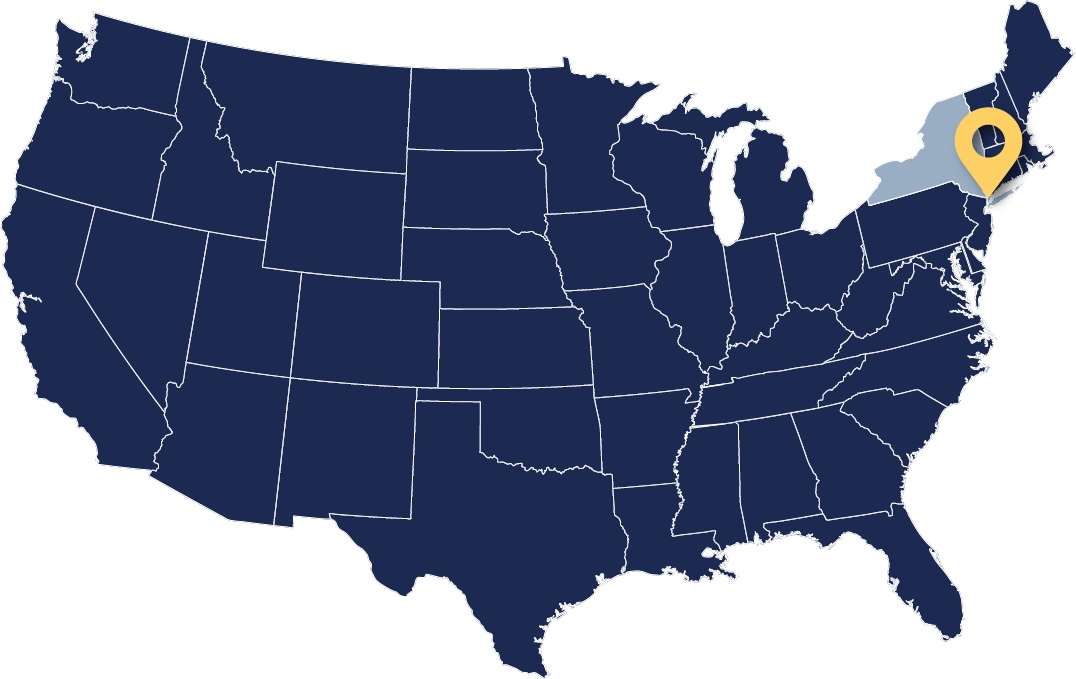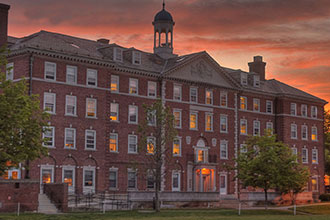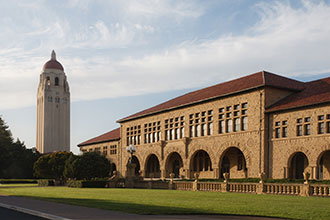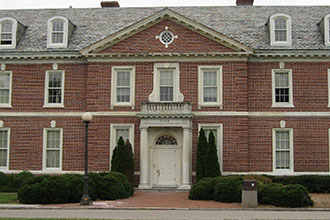COLUMBIA UNIVERSITY
REQUIREMENTS AND CAMPUS GUIDE
School Name: Columbia University
School Location: New York, NY
School Type: Private Ivy League Research
Category: High Reach
Columbia University Admissions Rates for Class of 2026
Applications: 60,377
Admitted: 3.73%

General Info
SAT/ACT Score
Test Optional for 2021-2022
Admission Cycle
Fall 2020 Test Scores
Math: 740-800
ERW: 720-770
ACT: 33-35
Dates/Deadlines
Early Decision: November 1
Early Results: Mid-December
Regular Deadline: January 1
Regular Results: Early April
School Information
Schedule: Semesters
Curriculum Type: Core Curriculum
Greek Life: Yes
Athletics: DI
COLUMBIA TIPS & GUIDE
“Columbia’s commitment to its global community makes it a warm and welcoming environment for students of diverse backgrounds. Its Core Curriculum creates a unified student body and allows students to bond with one another from the first day of school through shared experiences. At Columbia, you’ll experience the thrill of going to school in the greatest city in the world and establish lifelong friendships as you navigate the most formative years of your adulthood.“
– Liza, Class of 2019
Columbia Application Requirements, Admissions Tips, and University Guide
What is Columbia’s Acceptance Rate?
There were 60,377 students who applied to Columbia College and Columbia Engineering’s Class of 2026. Ultimately, 2,253 or 3.7% of students were admitted.
How do I apply to Columbia?
The process for applying to one of Columbia’s undergraduate programs changes depending on whether you’re applying to Columbia College, Columbia Engineering, or Barnard College. Columbia College and Columbia Engineering use the same application, whereas Barnard uses a separate application. Information on the Barnard application (a women’s college affiliated with Columbia) can be found here. Columbia College, Columbia Engineering, and Barnard are all geared toward full-time students who are beginning college for the first time.
When you decide which undergraduate college is the right choice for you, you can apply through the Coalition Application, the Common Application, or the QuestBridge Application (if you are a QuestBridge finalist). In addition to the personal statement you’ll submit through one of these application portals, Columbia requires you to answer several short Columbia-specific application questions.
Along with your application, you will submit a high school transcript, a mid-year report, letters of recommendation, one from a counselor and ideally from teachers who have taught you recently and can speak to your character and work ethic. If you are applying to the school of engineering, one of your letters must be written by a math or science teacher.
In addition to letters of recommendation, applicants have the option to submit supplementary materials. Students who have experience conducting research should submit a one-two page abstract about their project. Additionally, you can submit architecture, creative writing, dance, drama, film, music and visual arts supplements through SlideRoom.
What is required for Standardized Testing?
Standardized testing is optional for students who will be applying for entrance in Fall 2022 and 2023. but is HIGHLY RECOMMENDED for a competitive application. You can self report your scores at first and submit official scores once admitted. Superscoring is allowed.
What is it like to go to school in a big city while at Columbia?
Starting college in and of itself can be a culture shock. If you’ve never been away from home for a long period of time, it can take you time to adjust to the sudden increase in responsibility and independence you’ll experience at college. If you’re from a rural or suburban area and are moving to the largest city in the U.S., that shock could be more intense. But just because something is unfamiliar doesn’t mean it’s bad. Living and going to school in New York means you’ll have access to more cultural capital than you would almost anywhere else.
Columbia is in Morningside Heights, located just north of the Upper West Side of Manhattan. Morningside Heights strikes a good balance between college town and big city. It’s scattered with cute cafes, trendy restaurants, and a walkable distance to both the Hudson River and Central Park. Every neighborhood in New York has its own personality and you’ll have the opportunity to explore all of what NYC has to offer when you’re not in class. As a student at Columbia, you’ll also have access to tons of student discounts across the city and free access to more than 30 New York museums.
Is Columbia affordable?
Tuition at Columbia varies depending on the school you attend. Barnard and Columbia tuition currently hovers around $65,000 a year, with the added room and board cost of around $16,000 a year. For the 2022-2023 school year, Columbia’s total cost of attendance is estimated to be $85,967. Over half of admitted students have been offered need-based financial aid, part of Columbia’s commitment to meet 100 percent of demonstrated need for all students admitted as first-years, regardless of citizenship. 50% of Columbia students receive grants from Columbia and the average amount awarded is $52,073. It’s a big sticker price, but a great quality education. If you want to get a better idea of what your financial aid package would look like, you can use Columbia’s tuition calculator.
What is Columbia Engineering?
Founded in 1864 as the School of Mines, The Fu Foundation School of Engineering and Applied Science is the nation’s third oldest engineering school. Today, it’s home to 1,500 students studying 16 majors. Columbia Engineering reserves several research opportunities for students through the Student Research Program, meaning that over the course of four years, students will have a high chance of conducting research, not even considering the outside opportunities that will be accessible for you after you graduate. If you’re interested in the engineering college, but don’t want to miss out on the opportunity to take liberal arts courses at the College, you can enroll in the Columbia Combined Plan. Students from other liberal arts colleges can also apply to this program during their junior or senior year.
What is the relationship between Barnard and Columbia?
Barnard is an all women’s college founded in 1889. Barnard itself consists of around 3,000 undergraduate students, but the women there have access to the classes, facilities, resources, and extracurriculars at Columbia College in the same way the Columbia students do. 34% of the students at Barnard major in STEM, which can be a reaffirming environment for women interested in those fields. Barnard has a higher acceptance rate than Columbia (11%), but that doesn’t mean the school is significantly less competitive. Given the smaller applicant pool, women’s colleges typically have higher acceptance rates.
While the resources available may be similar, Barnard College is the younger sister to Columbia and undergraduates will be exposed to different experiences. The major differences between these schools are that the admissions process is separate, there are two distinct presidents and separate teachers/administration, as well as distinct campus locations. Additionally, when you graduate from Barnard College, your degree will say Columbia University, Barnard College. Nonetheless, being at Barnard College means you will have the opportunity to be involved both in a tight-knit community of strong women and a large, resource-filled Ivy League University.
Does Columbia have course requirements?
Columbia has a core curriculum, which is a set of common seminars all students must take at specific stages during their academic career. There are four core requirements: Science, Global Core, Foreign Language, and Physical Education. Certain categories of classes fulfill the core requirements; Frontiers of Science, Music Humanities, Art Humanities, Literature Humanities, University Writing, and Contemporary Civilization are also a part of the core curriculum.
Do I have to live on Campus while at Columbia?
At Columbia, housing is guaranteed for four years. In a place like New York where real estate is precious, it’s no surprise that nearly 100% of students choose to live on campus all four years. If you end up being one of those students, you’ll have several housing options: singles, suites, halls or brownstones. First years have the option of living in Carman, Furnald, John Jay, and the all-class integrated Living Learning Center in Wallach and Hartley. Of course, each hall is as unique as the students that fill its rooms, so Columbia allows you to choose your residence hall preferences before you matriculate. There are both single-sex and coed floors.
Brown also has a program for design-oriented students. Their five-year Brown-Rhode Island School of Design Dual Degree Program (BRDD) integrates a liberal arts education with concentrated work in the fine arts. In this program, you’ll complete roughly half of your coursework at Brown and half at RISD, resulting in an A.B. or Sc.B degree from Brown and a BFA degree from RISD. In order to be considered for BRDD, you must apply to both Brown and RISD through the Common App and indicate your interest in the dual degree program. Studying at two esteemed institutions is a great opportunity, but will require lots of hard work and dedication. Take a look at the requirements before you decide that this program is right for you.
How diverse is the student body of Columbia?
According to Columbia’s mission statement, the university “seeks to attract a diverse and international faculty and student body, to support research and teaching on global issues, and to create academic relationships with many countries and regions.” Columbia isn’t just saying that. The university has an impressive history of diversity — it was the first American university to enroll 1000 international students, the home of the first African American advocacy group on a multi-racial campus in the U.S and of the first gay-rights advocacy group on any college campus. Today, diversity remains a priority for Columbia.
The class of 2026 hails from all 50 states and 86 countries. Reflecting the growing diversity of Columbia’s student body, the number of admitted students who identified as students of color increased by 4 percent over last year, and first-generation college students increased by 3 percent.
What extracurriculars does Columbia have?
Regardless of your interests, Columbia has an organization for you. They have excellent and abundant resources for students interested in the arts, whether it’s studying art history, attending shows in the city, or working on your own projects on campus. The arts are not the only way to engage with the bustling city surrounding Columbia. There are ample community service opportunities that will help you break out of the Columbia bubble and give back to the people around you. In terms of athletics, Columbia is a Division I school that competes within the Ivy League. They have 14 varsity men’s teams and 15 varsity women’s teams. You can learn more about their athletics department here.
View Sources
- https://www.college.columbia.edu/news/columbia-announces-class-2026-admissions-decisions
- https://barnard.edu/news/introducing-barnard-year-science-byos
- https://www.toptieradmissions.com/resources/college-admissions-statistics/columbia-university-acceptance-rates/
- https://undergrad.admissions.columbia.edu/life/here/housing-dining
- https://undergrad.admissions.columbia.edu/test-optional-2022-2024
Columbia Admission Rates
| | Data Source | Admission Rate |
|---|---|---|
| Class of 2025 | CDS 2021-2022 | 4.07% |
| Class of 2024 | CDS 2020-2021 | 6.35% |
| Class of 2023 | CDS 2019-2020 | 5.27% |
| Class of 2022 | CDS 2018-2019 | 6% |
| Class of 2021 | CDS 2017-2018 | 6% |
MORE SCHOOLS TO CONSIDER

Harvard University
Cambridge, MA

Standford University
Palo Alto, CA

Duke University
Durham, NC
View All Schools ↓
| American Univ Amherst Brown Boston Univ CalTech Carnegie Melon Claremont McKenna Columbia Cornell Dartmouth Duke Emory Georgetown Georgia Tech Harvard Hopkins |
MIT NYU Northeastern Northwestern Notre Dame Princeton Rice Stanford Tufts Tulane UChicago UC Berkeley UC Davis UCLA |
UCSB UCSD UIUC UMich UNC UPenn Univ of Southern California UT Austin UVA Vanderbilt Villanova WashU Williams Wisconsin Yale |
*Updated 2022
